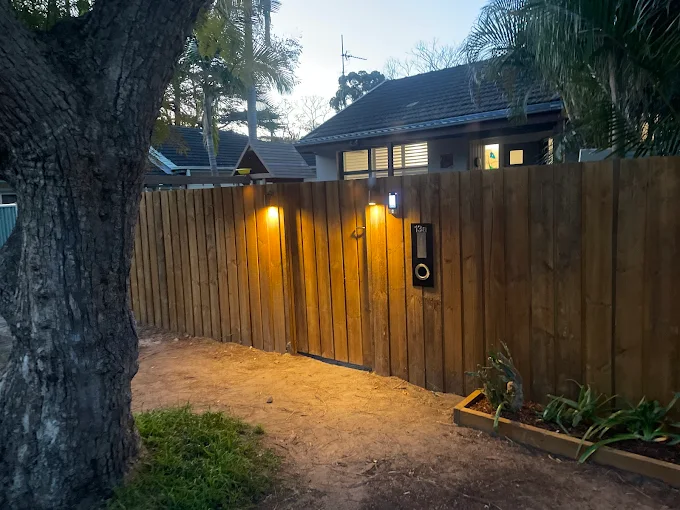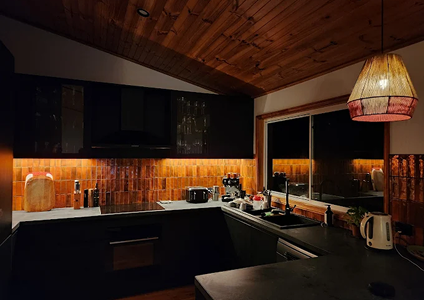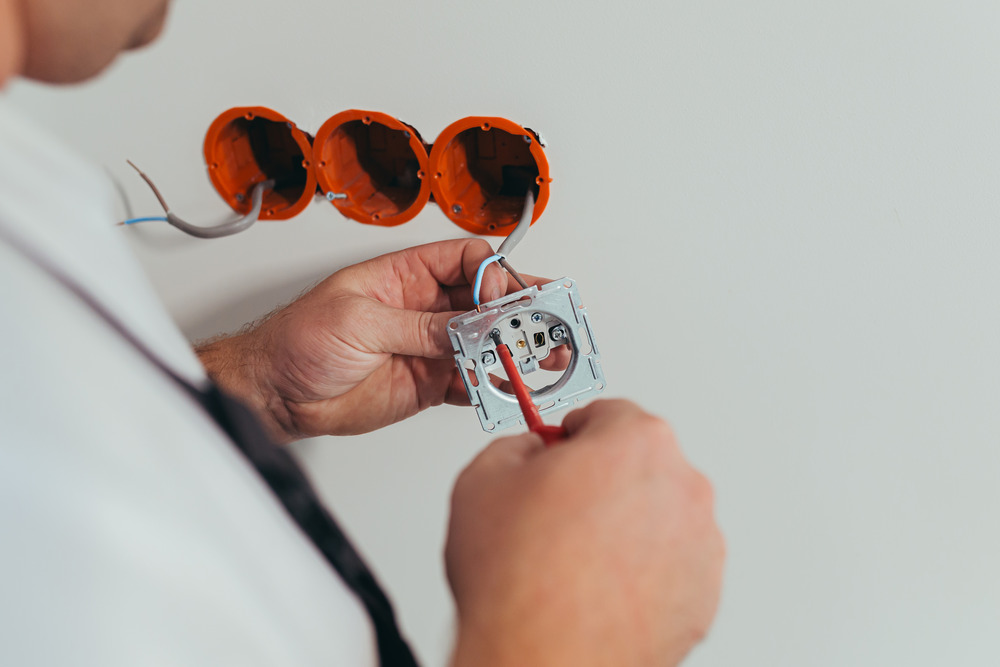You might already know that dusk to dawn security lights can be a solid way to add peace of mind to your property. These fixtures automatically turn on when the sun goes down and switch off at sunrise, giving you overnight illumination without the hassle of flipping switches. Good news, you can often install them in just a few steps, and they work well in both urban and rural areas across New South Wales.
The main idea behind these lights is simple. Steady lighting helps deter unwanted visitors and makes it easier for you (and your neighbours) to spot unusual activity. At the same time, you enjoy a convenient, hands-off system that only runs when it’s dark, so you are not wasting unnecessary electricity around the clock. Below, you will find a closer look at how dusk to dawn fixtures work, what features to look for, and how to position them for maximum coverage.
How these fixtures work
Dusk to dawn security lights rely on a sensor that detects changes in natural light. When the sensor notices daytime conditions, it powers the light down. When evening sets in, it does the opposite. You will often see two main sensor types in play:
- Photocells. A photocell tracks light levels. When the sun is gone, it triggers your light to turn on. Come morning, the light switches off. Photocell sensors are fairly straightforward and usually cost-effective.
- Combination sensors. Some fixtures blend photocells with infrared motion detection. They stay on at a dim level during the night, then brighten further when movement is detected.
Each style helps keep your space illuminated so you can move around more confidently after sunset. If you ever need to work in your shed later at night, or just want to see who is pulling into your driveway, a dusk to dawn setup can feel like an extra shield of security.

Boosting safety around your property
Security lighting on its own can’t guarantee total protection, but it does make it trickier for intruders to hide unnoticed. If you live in a suburban part of Sydney, for example, consistent lighting can help alert neighbours if anyone is lurking around. In more rural NSW areas, where properties may be widely spaced, a brightly lit yard can discourage opportunistic trespassing. Although hard numbers vary, many property experts agree that burglars are less likely to approach well-lit areas because it increases their risk of being seen.
Additionally, dusk to dawn security lights make everyday tasks safer. Coming home from the shops after dark, you can see your front door and place your keys in the lock without fumbling. You will also have a clearer view of uneven ground or puddles that can lead to slips. If you have regular guests, nighttime visitors can move around more confidently. That sense of clarity and visibility extends beyond crime prevention, giving you day-to-day convenience.
Reducing your energy costs
It might seem counterintuitive that lights running from dusk to dawn could save you money, but it helps to remember they switch on and off automatically. You do not have to worry about leaving them on all day or forgetting to flip that outside switch. The system does the work for you, which can prevent accidental energy drains.
Still, it is wise to consider bulb types. LED options tend to cost a little more upfront. However, they use much less power than incandescent bulbs and can last far longer. Over time, a well-chosen LED dusk to dawn fixture can reduce both maintenance and electricity bills.
Consider also that you can combine your dusk to dawn systems with motion sensors. Some newer models dim themselves unless motion is detected, helping you save even more energy. It is all about striking a balance between continuous security and cost-conscious operation.
Choose the right lighting features
While dusk to dawn security lights share some core traits, you will find variations in brightness, sensor quality, and additional features. Since you want a system that suits your home, garden, or commercial property, it pays to pick a fixture with the right mix of capabilities:
Light output and reach
Think about how large your outdoor space is. If you only need to light up a small porch, a fixture with moderate lumens (brightness measurement) might be enough. If you want to cover a bigger yard, though, go for a higher-lumen fixture that can illuminate more distance. A large floodlight might overpower a small courtyard with glare, so balance that brightness with your environment.
Motion sensors vs photocells
The simplest dusk to dawn models use photocells alone. This means they stay at a steady brightness all night. If you prefer more control, choose a combination fixture with motion detection. When no one is around, the light remains dim or even off. Then, it powers up to bright light when people or vehicles approach. For many NSW homes, that can be a good middle ground: consistent security plus extra brightness only when necessary.
Durability for NSW conditions
From the coastal breezes around Wollongong to the cold winter nights in the Blue Mountains, NSW weather can vary widely. Make sure to check the IP (Ingress Protection) rating, which indicates how well your fixture resists dust, rain, and occasional water spray. Look for lights built with corrosion-resistant materials, especially if you live near the coast. Aluminium housings or stainless steel brackets can help your fixture stand up to salty air over time.
Position your lights effectively
Even the best dusk to dawn security lights underperform if you do not place them correctly. When planning your setup, you want to make sure you cover the most vulnerable spots around your home without creating unwanted glare for neighbours. Here are a few guidelines to help you refine placement:
Focus on doorways and entry points
Your main doors are a crucial area to keep well-lit. Positioning your lights here makes it easier for you to see who is knocking or approaching. It also helps guests find your door after dark, which cuts down on confusion and potential hazards. Side doors, garages, and rear entries should be on your list too. Thieves often seek out low-visibility spots, so if you have a quiet back entrance, be sure to cover it.
Illuminate pathways and driveways
If you have a walkway or driveway, you know how precarious it can be in the evening. Installing dusk to dawn lights along these routes reduces the chance of tripping or stepping in puddles. For added clarity, look at low-mounted bollard lights or angled wall lights to outline your path. In some yards, property owners prefer a combination of motion-activated fixtures and steady path lights. This approach balances visibility with energy savings.
Consider your neighbour’s comfort
Too much stray light can be a nuisance. Strong beams shining directly into a neighbour’s bedroom window could create tension. A good rule of thumb is to angle your fixtures so they illuminate your property without glaring horizontally into someone else’s space. Some local councils in NSW also have guidelines to prevent light pollution, so a little forethought helps you avoid complaints.
Look after your investment
While dusk to dawn setups are quite handy, they do need periodic attention. Basic cleaning removes dust and debris that can affect your light’s brightness. A regular check ensures your sensors are performing well, and any seals remain weatherproof. Even small tasks, every few months, can keep your lights shining bright.
Basic cleaning routine
Set aside a few minutes to wipe fixtures with a damp cloth, removing cobwebs or dust. Check for dead insects around any ventilation openings or inside protective covers. Gently clean sensor lenses so they can accurately detect light levels. Switching the power off beforehand keeps you safe while you do your routine inspection.
Routine checks for coverage
Take a quick walk around your property after dark. Look for any dark patches, glare, or areas where the light might be overreaching and imposing on neighbours. If you spot a problem, adjust angles or swap in a different bulb to correct it. This informal walkabout is also a good chance to see if you have any flickering or partial outages that mean you should replace bulbs or upgrade your fixture.
When to call a professional
Some issues require more than a wipe-down. If your fixture is repeatedly flickering, if wires look tampered with, or if you see signs of water intrusion, get a qualified electrician to take a closer look. They know local NSW code requirements to ensure your wiring meets safety norms. When in doubt, it is worth seeking help rather than compromising on safety.
Expand your security approach
Although dusk to dawn security lights offer a valuable layer of protection, they work best as part of a bigger plan to safeguard your property. You can integrate them with cameras, alarm systems, or secure perimeter fencing. That way, if the lights do alert you or your neighbours to suspicious activity, other measures can confirm or address the threat.
- Combine with home cameras: If you have a reliable lighting setup outside, security cameras capture clearer footage in low light. Some modern cameras even use your lighting to improve night vision.
- Use timed interior lights: Setting a few lamps inside on timers can create the impression of people at home, even if you are out.
- Keep landscaping trimmed: Overgrown hedges or shrubs can offer hiding spots. If possible, keep them maintained to remove easy cover for prowlers.
When done well, these layers work in harmony to ward off unwanted visitors. It is not about trying to form a fortress. It is about making your home or business less appealing to opportunistic trespassers.
Explore other outdoor security options
You might explore more outdoor security lights if you are keen to cover diverse angles or add style to your garden. In addition to dusk to dawn models, you will find:
- Motion-activated floodlights: High-intensity bursts of light when movement is detected.
- Spotlights: Focused beams on specific areas such as statues, trees, or signage.
- Solar-powered lights: Environmentally friendly fixtures that charge during the day and light up at night.
Each type fits a certain scenario, and sometimes a blend of different fixtures is ideal. You might like floodlights for wide coverage near a back fence, combined with modest path lighting for a walkway. The key is to ensure your property’s key entry points and footpaths remain visible and safe.
Appreciate the subtle benefits
Beyond crime deterrence, dusk to dawn security lights make your property more welcoming for late-night arrivals or impromptu evening gatherings. If you like to have a barbecue when the sun goes down, an automatically lit area can keep the conversation flowing. Even if you just want to relax on the patio after dinner, reliable illumination means you do not have to fuss with manual switches.
For those who spend long hours away or occasionally travel, dusk to dawn lights create the impression of occupancy. This can help reduce the anxiety of leaving a dark, unlit home behind. In a sense, you can focus on your day-to-day life or your well-deserved holiday without worrying that your house is in total darkness each night.
Steer clear of common pitfalls
While these lights are quite user-friendly, there are a few missteps that people sometimes make. Avoiding them will help you get the most out of your lighting system:
- Relying on one fixture for everything: If your property is large, or you have multiple entry points, try installing more than one fixture so that you do not leave blind spots.
- Installing fixtures too low: Low mounting can lead to poor coverage. Aim to place your lights high enough so beams can spread over the area you need.
- Overlooking local restrictions: Some councils have rules regarding light pollution. Double-check those guidelines before you position your lights to avoid unnecessary red tape.
If you catch these issues early, you can easily adjust placement or opt for a more suitable fixture. In the end, successful lighting is about balancing your needs with the practical limits of each fixture.
Combine style with function
While the main purpose of dusk to dawn security lights is safety, that does not mean you have to settle for bulky floodlights. Modern fixtures come in a variety of stylish designs. For heritage homes in NSW, you might prefer coach lantern-style fittings that blend with period architecture. Minimalist or sleek designs might appeal if you have a contemporary property.
Pay attention to the fixture’s colour temperature (light’s hue). A cooler white can feel more like daylight and might be a better deterrent for prying eyes. A warmer white, on the other hand, can feel more inviting if you want your yard to look homely. Certain LED fixtures even let you adjust colour temperatures, though these can be pricier.
Maintain brightness over time
Your dusk to dawn lights can grow dimmer gradually, so it is worth keeping track of how well they perform. With LED fixtures, brightness tends to stay consistent for thousands of hours, but old-style bulbs may degrade more quickly. If you notice a decline in light levels, consider upgrading your bulbs or investing in a new fixture. This is a basic but important step to ensure you keep the security advantage.
You might also check if nearby plant growth is blocking or filtering the beams. A fast-growing hedge can quickly hamper the reach of your lights. Regularly pruning overhanging branches or tall shrubs helps maintain a clear path for the beam.
Balance cost and longevity
When shopping for dusk to dawn models, the price can vary significantly. More expensive fixtures might boast integrated motion sensors, higher IP ratings, or better warranties. Choosing such a fixture might be worthwhile if you anticipate extreme weather or if you want peace of mind over the long term. If you are more budget-focused, a simpler photocell-based light might do the job perfectly well.
It is also helpful to consider whether you already have wiring or need an electrician to set that up for you. Hardwired fixtures often offer stronger, more reliable power than solar or battery-based models, but you will face a larger upfront installation cost.
Practical tips for a smoother experience
Keeping your everyday needs in mind is a great way to avoid frustration. Here are a few practical suggestions to make your dusk to dawn setup work even better:
- Check for obstructions: Trim trees and shrubs that block the sensors or beam.
- Use shields: Some fixtures come with a shield you can adjust to direct the beam downward. This helps reduce glare.
- Evaluate brightness: If your lights are too bright, switch to a lower-lumen bulb or consider adding dimming controls if compatible.
- Think in layers: Combine your dusk to dawn setup with ambient garden lighting or motion lights for your driveway.
These little tweaks ensure you fine-tune the installation, instead of just living with an off-the-shelf default. Each home is unique, and that is why it pays to explore different solutions until you find a perfect fit.
Recap and your next step
Dusk to dawn security lights run on a simple premise: Light up your property at night, switch off in the morning, and help keep you safer in the process. They make life easier for you, from greeting late-night visitors to seeing off any potential intruders. Most units are easy to install and maintain, especially with a little forethought about mounting height, sensor location, and bulb choice.
If you want to explore broader solutions, consider adding cameras, combining motion sensors with steady lights, or pairing your dusk to dawn fixtures with other outdoor security lights. Think about how all these elements overlap, so your property stays well-lit yet remains neighbour-friendly.
Take a quick walk around your exterior as the sun sets, note where installation makes the most sense, and shop for fixtures that match both your style and your practical needs. If you run into electrical concerns or want to ensure full compliance with local requirements, speak with a qualified electrician.
For further assistance with security lighting or any property maintenance needs, you can reach out to ABC Electrical & Property Maintenance for professional help. By taking these steps, you are well on your way to a brighter, safer home, all without the headache of daily light switches. Enjoy the confidence that comes with consistent and efficient outdoor lighting, and rest easy from dusk to dawn.



